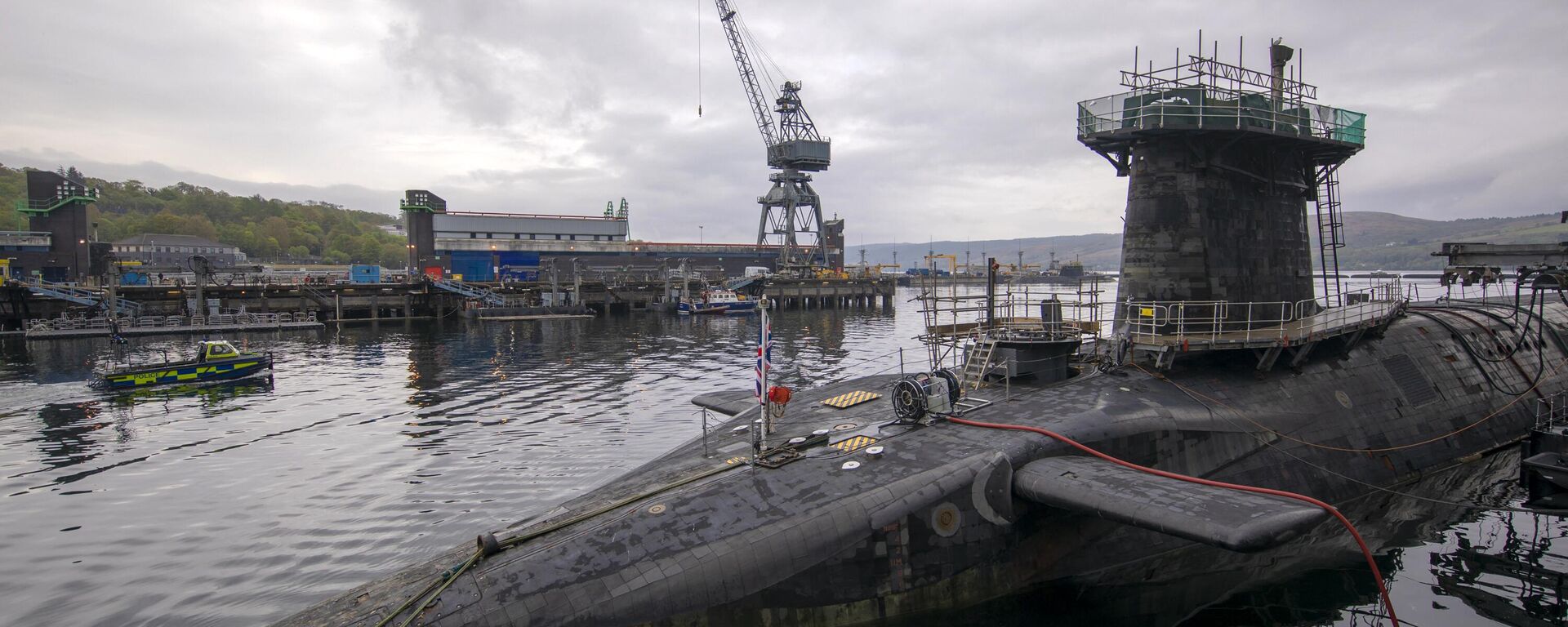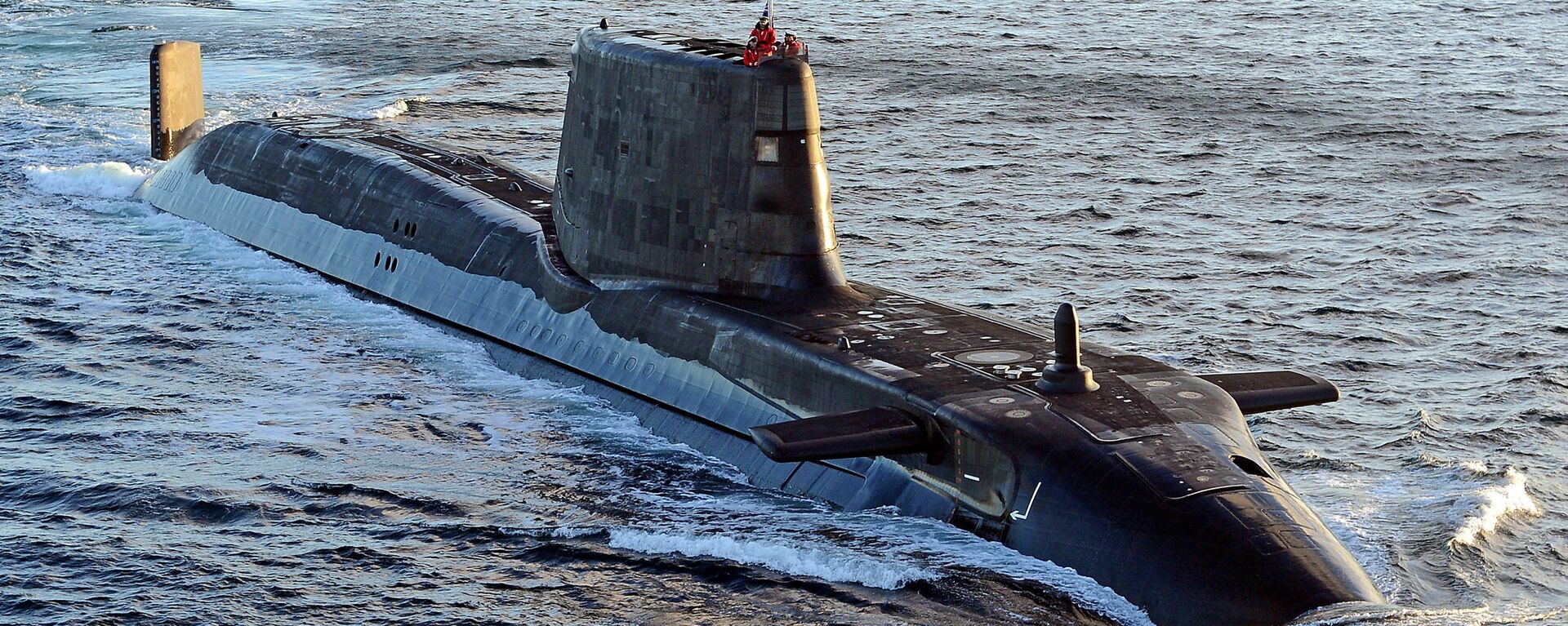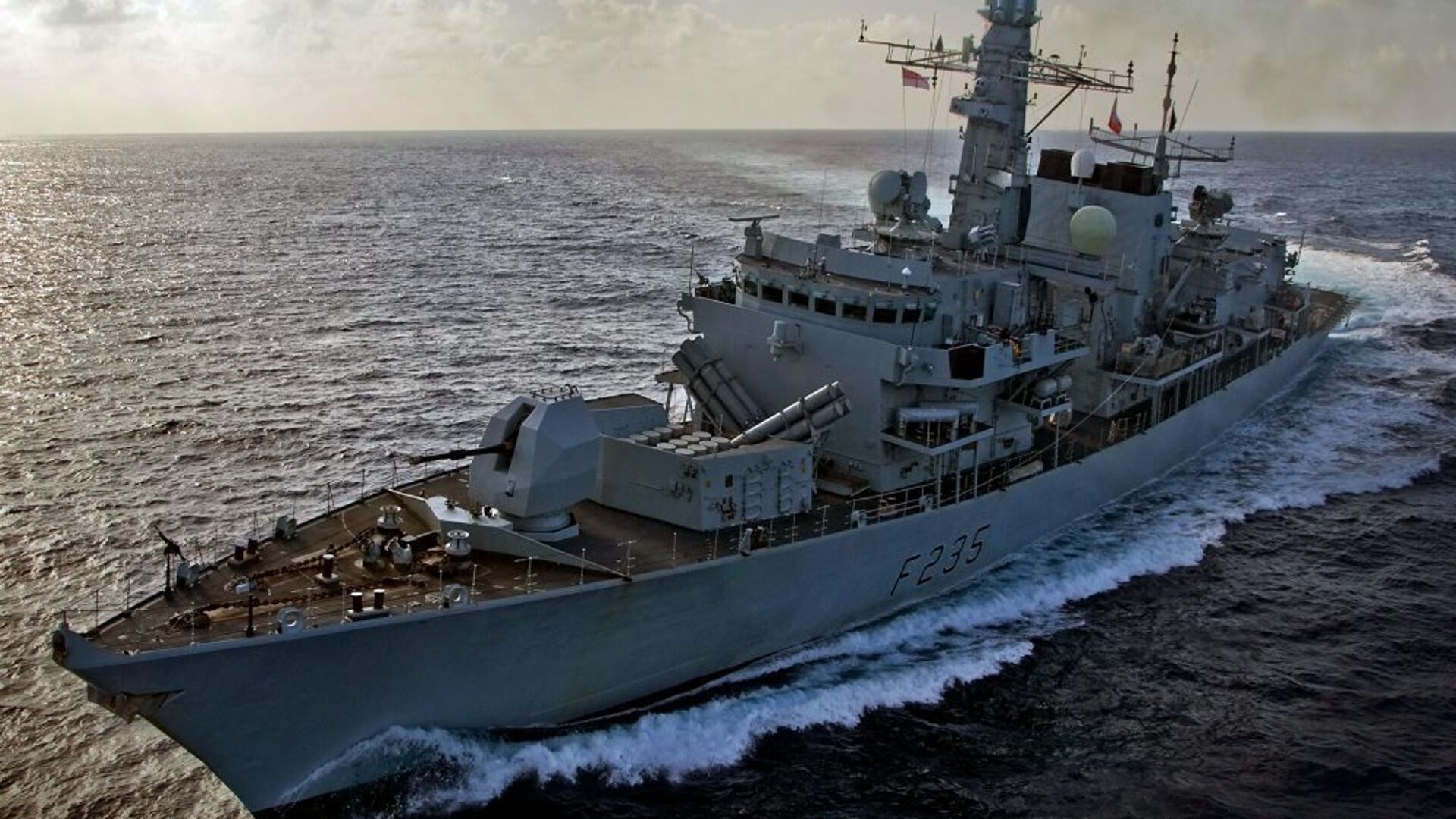https://sputnikglobe.com/20240109/uks-seapower-sags-facing-recruitment-nightmare--naval-vessel-cutback-1116073739.html
UK's Seapower Sags, Facing Recruitment Nightmare & Naval Vessel Cutback
UK's Seapower Sags, Facing Recruitment Nightmare & Naval Vessel Cutback
Sputnik International
Despite pouring funds into beefing up its naval might, the Royal Navy hasn't made it to the world's top five in terms of sea power. This bitter pill can be attributed to financial constraints, reductions in fleet size, the pressing issue of personnel shortages, and the numerous operational challenges faced by the Navy.
2024-01-09T12:20+0000
2024-01-09T12:20+0000
2024-01-09T14:55+0000
military
military & intelligence
kirsten gillibrand
westminster
china
japan
us army
royal navy
navy
https://cdn1.img.sputnikglobe.com/img/106937/48/1069374812_0:119:1000:682_1920x0_80_0_0_c2df469e8a293022a6301538365d24ca.jpg
According to local media, driven by severe personnel shortages, the British Royal Navy intends to retire the recently renovated Type 23 Class frigates, HMS Argyll and HMS Westminster.Originally, it was anticipated that these ships would operate in conjunction with the newly built Type 26 Class frigates, considering the substantial investments made in recent years to enhance their capabilities. Nevertheless, the personnel from the decommissioned frigates will now be integrated into the crews of the new vessels.The fleet of British frigates in service has been subject to cuts in recent years. Initially, the Defense Ministry had set a target to construct thirteen Type 26 frigates, but subsequently revised this plan, ultimately reducing the number to a mere 8 ships.The fleet of Type 23 frigates has plunged from 16 to 11 ships, and with their imminent decommissioning, there are only 9 remaining. In contrast, the Type 45 Class destroyer fleet was halved from 12 to 6 ships due to design challenges and subsequent operational issues that affected their combat efficiency.Despite major financial investments to beef up its naval capabilities, the Royal Navy failed to make it into the top five globally as far as naval prowess goes. The performance of the upcoming Type 26 frigates will be pivotal for the Navy's future position. Whether these frigates will encounter operational challenges similar to the Type 45 destroyers or serve as a dependable naval asset remains to be seen.Media reports indicate that the Defense Ministry is considering phasing out the Type 45 Class destroyers without a replacement. This consideration stems from concerns about the financial viability of developing a next-generation destroyer. While these destroyers possess less firepower than their US, Chinese, Japanese, and South Korean counterparts, they are considerably costlier, highlighting the inefficiencies in the British defense industry.In 2021, a staggering 83 percent of the British destroyers experienced non-operational periods, with only one vessel combat-ready at any given time. The Royal Navy's aircraft carriers, already struggling with escort vessel shortages, encountered further obstacles such as mechanical failures and accidents, diminishing their operational effectiveness.Internal Navy evaluations consistently highlight numerous issues, including inadequate training for carrier-based operations, which jeopardize the safety of personnel. These problems have been exacerbated by budget cuts since the early 2010s. Furthermore, recruitment for the Navy and the Royal Marines plunged 22.1 percent between March 2022 and March 2023, surpassing declines in the Air Force and Army. Over the period from July 2022 to July 2023, the Royal Navy experienced a workforce reduction of 4.1 percent, resulting in a combined total of approximately 37,960 personnel for the Navy and Marines.This downturn is indicative of a broader recruitment predicament observed in Western military forces, as the US Army also grapples with reduced personnel numbers due to similar issues. According to the Pentagon, the military couldn't meet its recruitment goals by roughly 41,000 recruits. This problem was highlighted during a hearing by the House Armed Services Military Personnel Subcommittee late last year: "That number understates the challenge before us as the services lowered [their] end-strength goals in recent years, in part because of the difficult recruiting environment," Deputy Under Secretary of Defense for Personnel and Readiness Ashish Vazirani told news sources.
https://sputnikglobe.com/20230131/britains-royal-navy-faces-sticky-situation-as-superglued-bolts-found-in-reactor-of-trident-nuke-sub-1106864641.html
https://sputnikglobe.com/20221029/uk-royal-navy-chief-orders-probe-into-submarine-service-related-sex-abuse-claims--1102823820.html
westminster
china
japan
Sputnik International
feedback@sputniknews.com
+74956456601
MIA „Rossiya Segodnya“
2024
Chimauchem Nwosu
https://cdn1.img.sputnikglobe.com/img/07e7/09/01/1113046371_0:99:1536:1635_100x100_80_0_0_9c5c627283eca931c39fe4852bbb301c.jpg
Chimauchem Nwosu
https://cdn1.img.sputnikglobe.com/img/07e7/09/01/1113046371_0:99:1536:1635_100x100_80_0_0_9c5c627283eca931c39fe4852bbb301c.jpg
News
en_EN
Sputnik International
feedback@sputniknews.com
+74956456601
MIA „Rossiya Segodnya“
Sputnik International
feedback@sputniknews.com
+74956456601
MIA „Rossiya Segodnya“
Chimauchem Nwosu
https://cdn1.img.sputnikglobe.com/img/07e7/09/01/1113046371_0:99:1536:1635_100x100_80_0_0_9c5c627283eca931c39fe4852bbb301c.jpg
british royal navy, type 23 class frigates, type 26 class frigates, uk defense ministry, type 45 class destroyers, royal navy recruitment decline, royal navy fleet reductions, uk navy operational challenges.
british royal navy, type 23 class frigates, type 26 class frigates, uk defense ministry, type 45 class destroyers, royal navy recruitment decline, royal navy fleet reductions, uk navy operational challenges.
UK's Seapower Sags, Facing Recruitment Nightmare & Naval Vessel Cutback
12:20 GMT 09.01.2024 (Updated: 14:55 GMT 09.01.2024) Despite pouring funds into beefing up its naval might, the Royal Navy hasn't made it to the world's top five in terms of sea power. This bitter pill can be attributed to financial constraints, reductions in fleet size, the pressing issue of personnel shortages, and the numerous operational challenges faced by the Navy.
According to local media, driven by severe personnel shortages, the British Royal Navy intends to retire the recently renovated Type 23 Class frigates, HMS Argyll and HMS Westminster.
Originally, it was anticipated that these ships would operate in conjunction with the newly built Type 26 Class frigates, considering the substantial investments made in recent years to enhance their capabilities. Nevertheless, the personnel from the decommissioned frigates will now be integrated into the crews of the new vessels.
The fleet of British frigates in service has been subject to cuts in recent years. Initially, the Defense Ministry had set a target to construct thirteen Type 26 frigates, but subsequently revised this plan, ultimately reducing the number to a mere 8 ships.

31 January 2023, 18:09 GMT
The fleet of Type 23 frigates has plunged from 16 to 11 ships, and with their imminent decommissioning, there are only 9 remaining. In contrast, the Type 45 Class destroyer fleet was halved from 12 to 6 ships due to design challenges and subsequent operational issues that affected their combat efficiency.
Despite major financial investments to beef up its naval capabilities,
the Royal Navy failed to make it into the top five globally as far as naval prowess goes. The performance of the upcoming Type 26 frigates will be pivotal for the Navy's future position. Whether these frigates will encounter operational challenges similar to the Type 45 destroyers or serve as a dependable naval asset remains to be seen.
Media reports indicate that the Defense Ministry is considering phasing out the Type 45 Class destroyers without a replacement. This consideration stems from concerns about the financial viability of developing a next-generation destroyer. While these destroyers possess less firepower than their US, Chinese, Japanese, and South Korean counterparts, they are considerably costlier, highlighting the inefficiencies in the British defense industry.
In 2021, a staggering 83 percent of the
British destroyers experienced non-operational periods, with only one vessel combat-ready at any given time. The Royal Navy's aircraft carriers, already struggling with escort vessel shortages, encountered further obstacles such as mechanical failures and accidents, diminishing their operational effectiveness.
Internal Navy evaluations consistently highlight numerous issues, including inadequate training for carrier-based operations, which jeopardize the safety of personnel. These problems have been exacerbated by budget cuts since the early 2010s.
Furthermore, recruitment for the Navy and the Royal Marines plunged 22.1 percent between March 2022 and March 2023, surpassing declines in the Air Force and Army. Over the period from July 2022 to July 2023, the Royal Navy experienced a workforce reduction of 4.1 percent, resulting in a combined total of approximately 37,960 personnel for the Navy and Marines.
This downturn is indicative of a broader recruitment predicament observed in Western military forces, as the US Army also grapples with reduced personnel numbers due to similar issues. According to the
Pentagon, the military couldn't meet its recruitment goals by roughly 41,000 recruits. This problem was highlighted during a hearing by the House Armed Services Military Personnel Subcommittee late last year:
"That number understates the challenge before us as the services lowered [their] end-strength goals in recent years, in part because of the difficult recruiting environment," Deputy Under Secretary of Defense for Personnel and Readiness Ashish Vazirani told news sources.

29 October 2022, 11:17 GMT







